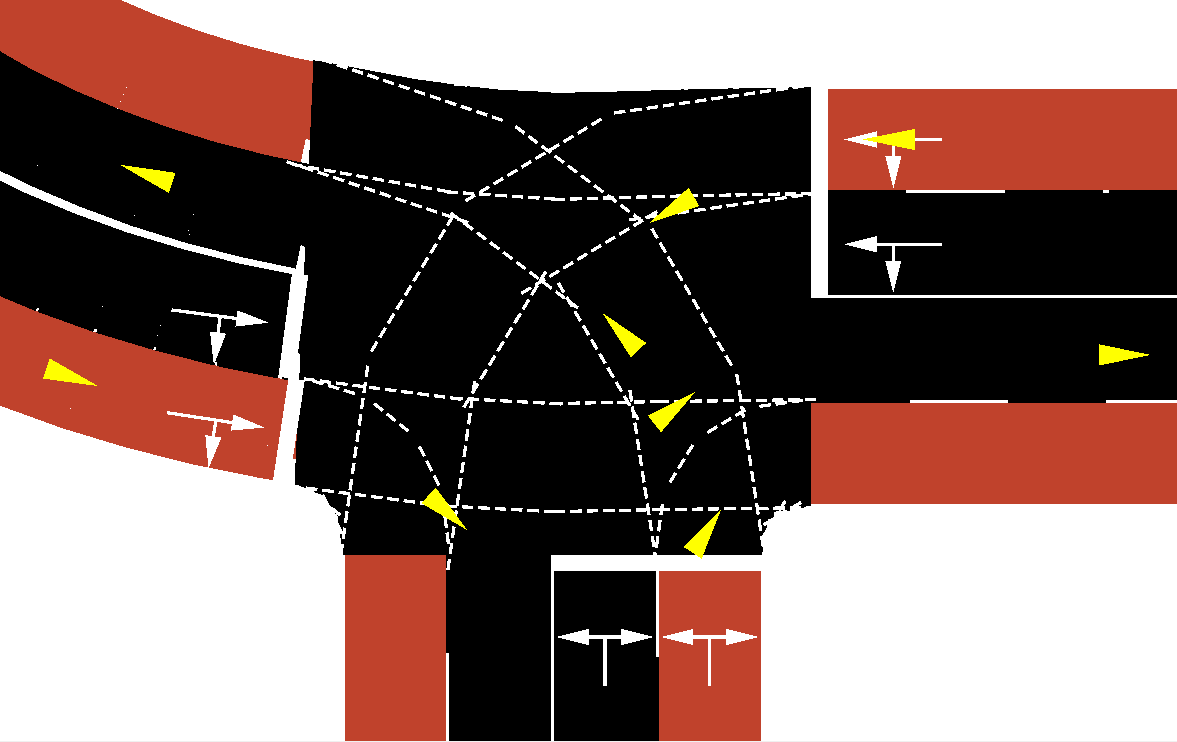 |
 |
| The social force model in action. | SUMO Cyclists driven by social forces. |
Microscopic traffic simulation is an important tool that traffic engineers and researchers use to assess the performances of existing and new transport innovations. Historically being designed for car traffic, current simulation frameworks (e.g. SUMO, VISSIM) still only provide rudimentary models for the simulation of cyclists with strong limitations regarding the interaction of cyclists and other road users. At the bike lab, we are working on new models for the microscopic simulation of cyclists. A new adaption of the social force model introduces physics-based bicycle dynamics [Schmidt2023] to an established microscopic model [Helbing1995], aiming to improve simulated interactions. In this model, a cyclist's motivation to act is described by imaginary forces. The summation of these forces becomes the input of a dynamic bicycle model and drives the simulated movements. In this framework, we are currently offering two options for Master’s projects.
Option 1: Modelling and Simulation:
With the fundamental framework set, many features have to be added to the model to enable a full simulation of bicycle traffic. Think for example about the transition between riding and stopping, path planning to execute complex riding maneuvers, or taking and giving priority. In a modeling and simulation Master’s project, you may choose a relevant feature, identify the desired cyclist behavior from the literature, develop a suitable model, implement the model in Python, calibrate its parameters, and validate its performance.
Option 2: Validation Experiments:
Many aspects of our current model are derived heuristically and require validation with real-world data. So, how do cyclists actually interact? How do they perform evasive maneuvers? How much space do they leave each other? How closely do they overtake? In an experimental master’s project, you may run experiments on cyclist interactions, measure interaction profiles in terms of relative position, speed, acceleration, or orientation, and identify typical behavioral patterns. This requires designing and setting up experiments, selecting suitable performance measures, choosing and calibrating a sensor setup, and post-processing the collected data. The post-processed data may then be used to calibrate and validate parts of the cyclist social force model.
References
| [Helbing1995] | Helbing, D., & Molnár, P. (1995). Social force model for pedestrian dynamics. Physical Review E, 51(5), 4282–4286. https://doi.org/10.1103/PhysRevE.51.4282 |
| [Schmidt2023] | Schmidt, C., Dabiri, A., Schulte, F., Happee, R. & Moore, J. (2023). Essential Bicycle Dynamics for Microscopic Traffic Simulation: An Example Using the Social Force Model. The Evolving Scholar - BMD 2023, 5th Edition. https://doi.org/10.59490/649d4037c2c818c6824899bd |
Current implementation of the model: https://github.com/chrismo-schmidt/cyclistsocialforce
How To Apply
If you would like to apply for this project, please send an approximately half page letter explaining your motivations and interest in the lab and project, CV or resume, a list of courses you've taken, the name of your MSc track, and any other relevant information to j.k.moore@tudelft.nl.

